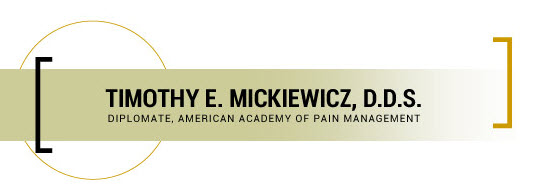Breakthroughs seem to present themselves without warning. The simple Post-It® note was a result of failed glue that wasn’t quite sticky enough. Teflon™ resulted from clogged valves when an inquisitive scientist discovered the miracle coating after sectioning those valves. Clinically, dentistry seems to move at a glacial pace. We still extract teeth in pretty much the same way as decades before. Composite resins and porcelain are moving at a slightly quicker pace. Digital technology, well, its exponential growth is no surprise.
In the pain arena there is no shortage of miracle medications. We handed out Vioxx like candy until people started dying. Toradol was an amazing NSAID and only 10 milligrams. There was no stomach upset—just that pesky blood pressure crisis….oops. Check out the recent cover of TIME® magazine (magazines themselves becoming victims of digital 140-character soundbites): “11 Surprising Uses For BOTOX®”. The wonder drug! Cures all ills! With so many off-label uses and requisite Black Box warnings, it is a miracle we don’t see more negative outcomes.
We think we know so much about it. But take a step back and take a deeper look at this neurotoxin before you sign up for that weekend make-a-million seminar. Who would have thought that the ladies drinking Cosmos at BOTOX® parties would suddenly find their headaches disappearing, leading to a multi-billion-dollar industry? Now we are talking serendipity!
Migraine control is the Holy Grail for neurologists and patients. Migraines are a grossly under-diagnosed condition that baffles some of the great minds in medicine. Now we suddenly have an effective treatment that, when used judiciously, has shown amazing promise without adverse complications. Sure, there are isolated reactions; classic risks that are, thankfully, rare.
So now we need to look at the bioethics of who should dispense this miracle poison. Certainly dentists are well versed in the complex anatomy of the face. They can make a great case for themselves as the ideal clinicians to administer BOTOX® and fillers to augment cosmetic procedures. But how many dentists do extraoral injections on a regular basis?
A mandibular nerve block is an art form fraught with risk that we mitigate with good technique. Temporal injection with a major blood vessel coursing through it. Facial nerves and arteries. Injections into the anterior cervical area. With the complexity of the TMJ, boy you better know your anatomy.
I do refer patients to neurologists regularly, as I have a huge population of patients who suffer headaches as a co-morbidity to TMD. And BOTOX® is always a strong consideration. Personally, I am a huge fan of trigger point injection. Same needle, same injection sites, but the use of plain lidocaine equals less risk. It is also a great diagnostic tool.
If the patient responds to this simple injection, odds are they will see success with BOTOX®. I am certified to use BOTOX®, but insurance constraints for patients make seeing their medical provider more cost effective. I am okay with that. It’s not about the money for me—it’s about the patient. Plus, I don’t want patients trying to cajole me into performing cosmetic procedures. There are plenty of good physicians out there to handle those requests.
In my view, it is more appropriate to stick to pain management. That is my expertise and there is more than enough to handle. My advice? With all the other wondrous things doctors are treating with this miracle poison, use with caution. Aspirin is a great drug available anywhere. It’s so powerful and risky, though, that if brought to market now, it would require a prescription and major FDA approval. Better safe than sorry.


